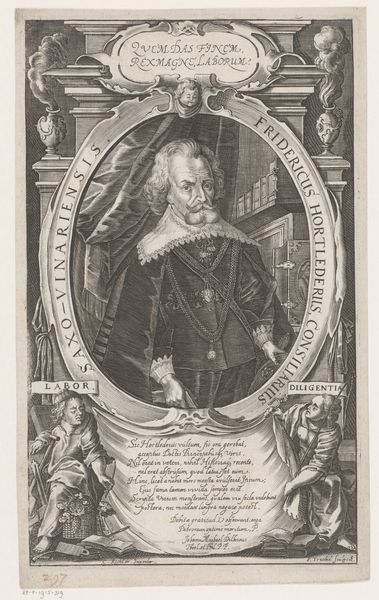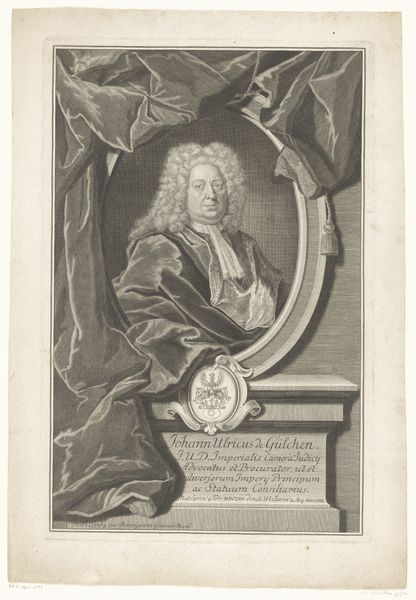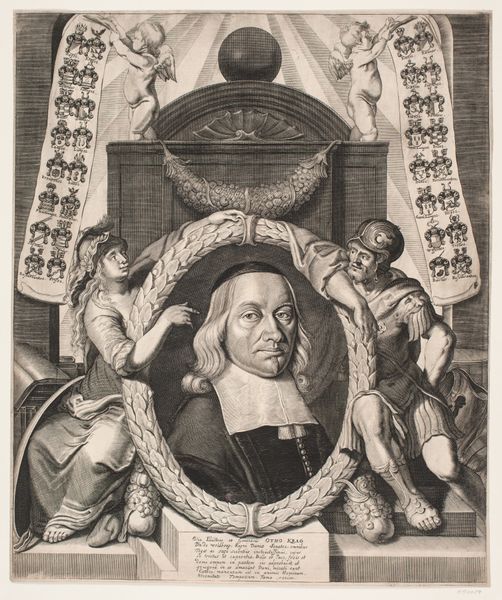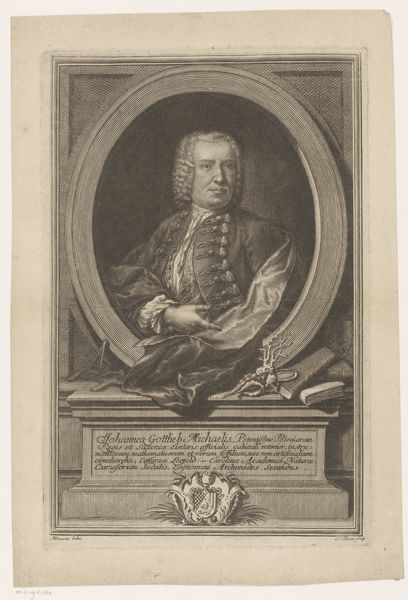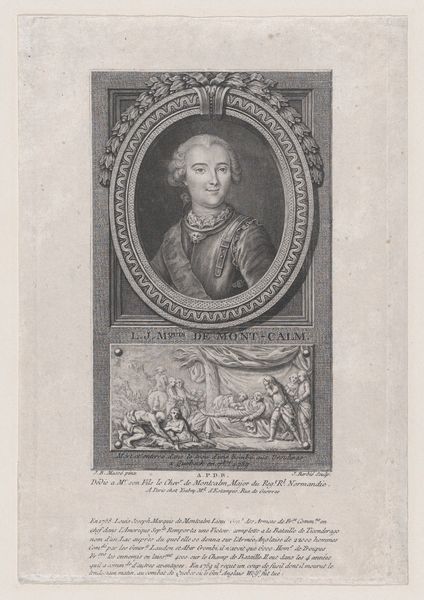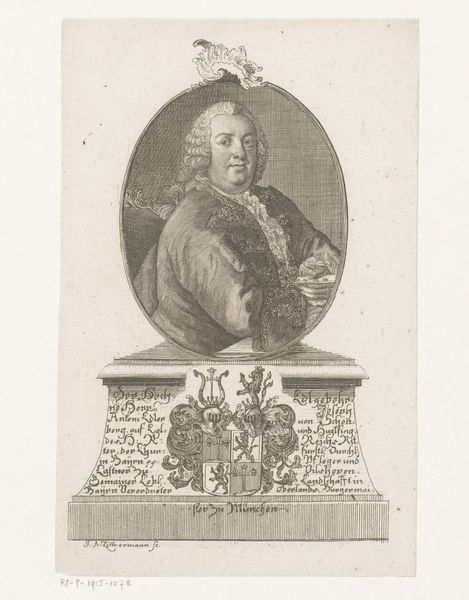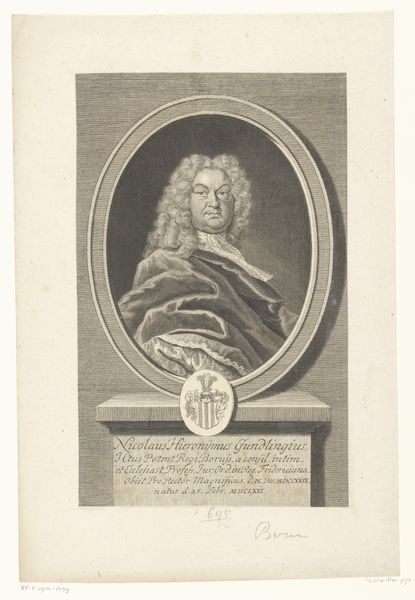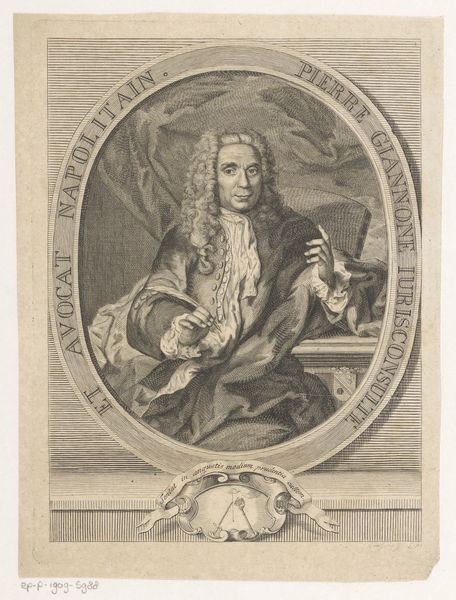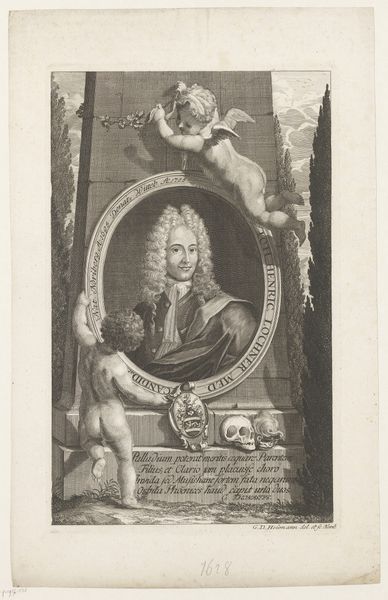
print, paper, engraving
#
portrait
#
baroque
# print
#
paper
#
history-painting
#
engraving
Dimensions: height 175 mm, width 113 mm
Copyright: Rijks Museum: Open Domain
Curator: This intricate print, dating from 1759, presents a portrait of Jacobus Franciscus Rosart by Cornelis van Noorde. It's held here at the Rijksmuseum. The print shows him surrounded by allegorical figures, text, and a scene depicting his work. Editor: My eye is drawn to the incredible detail achieved through the engraving on paper! There’s such an intensity in Rosart's gaze and then a scene on the lower level that showcases laborers. It has an immediately powerful impression. Curator: Absolutely! And Rosart's own story, which is hinted at through visual symbols. He holds what appears to be a letter "A" hinting to the work he dedicated to typography. This connects to broader discussions around craftsmanship, knowledge, and the social hierarchies that defined artistic practices. I’m particularly interested in the book held open above Rosart. We have a set of musical notes on one side, paired with the ABCs on the other. This speaks volumes about his commitment to new typography for musical scores, opening a range of avenues for interpreting ideas around intersectionality with language. Editor: And look closely at those laborers at the bottom of the piece. Van Noorde dedicated space to showing the physical work. We tend to view art separated from those efforts. I think focusing on materials shifts the conversation towards labor conditions. Where and how did this happen? The inscription includes, if I read it right, reference to establishing typography work in Brussels in 1759. What did that work mean in the rapidly changing economy? Curator: Exactly. Situating this piece in its sociopolitical context allows us to ask crucial questions about Rosart's role within the Enlightenment, the spread of knowledge, and access to education. Also, I think gender definitely impacts what types of occupations or artistic productions are recognized by academic spheres. This is just something else to think about in connection to social standing, skill, and hierarchies. Editor: Understanding production provides tangible avenues for examining the impact that Rosart had on print culture during his life and also what endures with current engravers, publishers, and other artisans now. Curator: Looking at "Portrait of Jacobus Franciscus Rosart" in the context of history offers such diverse layers, really making the study of visual and material culture a fascinating experience. Editor: Right. With each artwork, material processes unveil social histories, just waiting for more and deeper inspection!
Comments
No comments
Be the first to comment and join the conversation on the ultimate creative platform.

